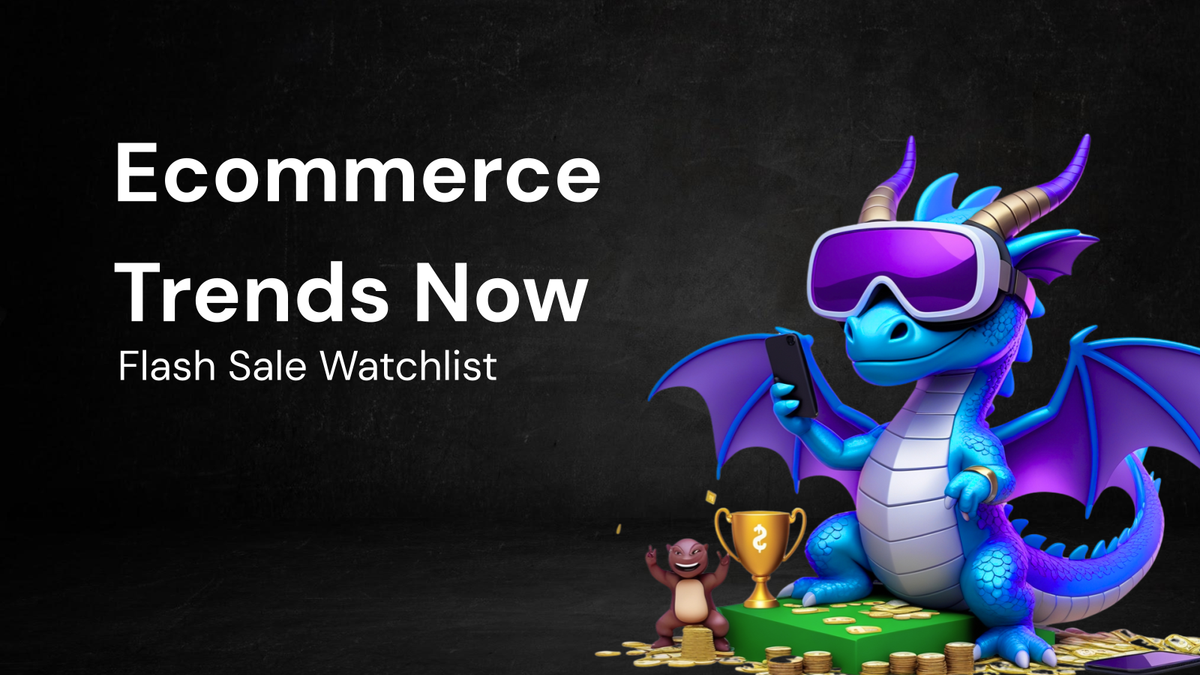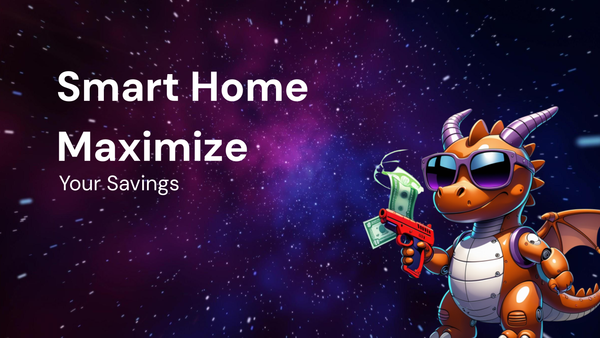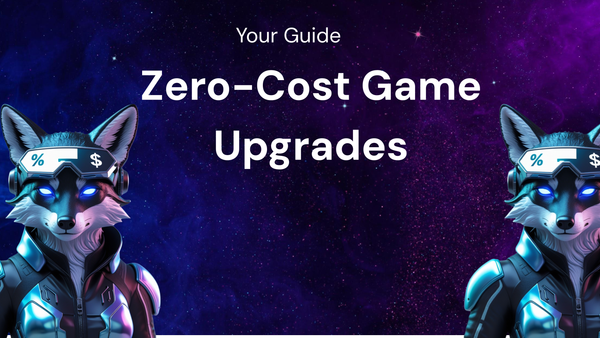Flash Sale Watchlist: Top Ecommerce Trends Right Now

Flash Sale Watchlist: Top Ecommerce Trends Right Now
The world of ecommerce is a dynamic and ever-evolving landscape. To thrive, businesses need to stay ahead of the curve, adapting to new technologies, shifting consumer behaviors, and emerging trends. One of the most effective ways to capture attention and drive sales in this competitive market is through flash sales. But even flash sales need to evolve!
This blog post dives deep into the top ecommerce trends impacting how flash sales are designed, executed, and optimized for success. Whether you're a seasoned ecommerce veteran or just starting out, this watchlist will provide valuable insights into the strategies that are shaping the future of online retail.
I. Personalization: Tailoring the Flash Sale Experience
Gone are the days of generic, one-size-fits-all flash sales. Consumers now expect personalized experiences that cater to their individual needs and preferences. Personalization in flash sales goes beyond simply addressing customers by name. It involves leveraging data to offer relevant products, discounts, and timing that resonate with each individual shopper.
- Data-Driven Segmentation: The foundation of personalization lies in data. Ecommerce businesses need to collect and analyze data on customer demographics, browsing history, purchase behavior, and engagement with past marketing campaigns. This data allows for segmenting audiences into distinct groups with shared characteristics and interests. For example, you might have segments for "Loyal Customers," "First-Time Buyers," "Luxury Goods Enthusiasts," or "Discount Hunters."
- Personalized Product Recommendations: Based on a customer's past purchases and browsing history, flash sales can showcase products they are more likely to be interested in. AI-powered recommendation engines can analyze product attributes, customer preferences, and trending items to create dynamic product recommendations for each user. This ensures that customers are presented with relevant offers that are more likely to convert.
- Dynamic Pricing and Discounting: Not all customers are created equal, and neither are their price sensitivities. Some customers are willing to pay full price for a product they desire, while others are more driven by discounts. Flash sales can utilize dynamic pricing strategies to offer personalized discounts based on a customer's purchase history, loyalty status, or even their location. For example, a loyal customer might receive a higher discount than a first-time visitor.
- Personalized Timing and Notifications: The timing of flash sale notifications can significantly impact their effectiveness. Sending emails or push notifications at optimal times, based on a customer's past engagement patterns, can increase open rates and click-through rates. For example, if a customer typically browses your site during their lunch break, you might send them a flash sale notification just before that time.
- Personalized Landing Pages: When a customer clicks on a flash sale link, they should be directed to a personalized landing page that showcases products and offers tailored to their interests. This can involve highlighting specific product categories, displaying personalized product recommendations, or even customizing the messaging to resonate with their individual needs.
II. Mobile-First Optimization: Catering to the On-the-Go Shopper
Mobile devices are now the primary way many consumers access the internet, making mobile-first optimization essential for any successful ecommerce strategy, especially for flash sales. A seamless and engaging mobile experience can significantly boost conversion rates and customer satisfaction.
- Responsive Design: A responsive website design is no longer optional; it's a necessity. Your website and flash sale landing pages must adapt seamlessly to different screen sizes and devices, ensuring a consistent and user-friendly experience across smartphones, tablets, and desktops.
- Optimized Mobile Checkout: The mobile checkout process should be as streamlined and frictionless as possible. Minimize the number of steps required to complete a purchase, offer guest checkout options, and integrate popular mobile payment methods like Apple Pay and Google Pay.
- Push Notifications: Push notifications are a powerful tool for driving mobile traffic and promoting flash sales. Use them to announce new deals, remind customers of expiring offers, or provide personalized recommendations based on their browsing history. However, be mindful of notification frequency and avoid overwhelming users.
- Mobile-Specific Offers: Consider offering exclusive discounts or promotions to mobile users to incentivize them to shop on their devices. This can be a great way to encourage mobile app downloads or to simply boost mobile sales.
- Fast Loading Times: Mobile users have little patience for slow-loading websites. Optimize images, minimize code, and leverage caching techniques to ensure that your website and flash sale landing pages load quickly on mobile devices.
III. Social Commerce Integration: Leveraging the Power of Social Media
Social media platforms have become integral to the consumer shopping experience. Integrating flash sales with social commerce can significantly expand your reach, drive traffic to your website, and boost sales.
- Shoppable Posts and Stories: Platforms like Instagram and Facebook offer features that allow you to tag products directly in your posts and stories, making it easy for users to purchase items they see in your content. Use these features to showcase flash sale products and drive traffic to your website.
- Live Shopping Events: Live shopping events are a growing trend in ecommerce, and they can be a powerful tool for promoting flash sales. Host live streams on platforms like Instagram Live, Facebook Live, or YouTube Live, and showcase flash sale products while interacting with viewers in real-time.
- Influencer Marketing: Partner with relevant influencers to promote your flash sales to their followers. Influencers can create engaging content that showcases your products and encourages their audience to take advantage of the limited-time offers.
- Social Media Contests and Giveaways: Run contests and giveaways on social media to generate excitement around your flash sales and drive engagement with your brand. Offer flash sale discounts or products as prizes to incentivize participation.
- Social Listening and Engagement: Monitor social media conversations related to your brand and products to identify opportunities to promote your flash sales. Respond to customer inquiries, address concerns, and engage with users to build relationships and foster brand loyalty.
IV. Augmented Reality (AR) and Virtual Reality (VR): Immersive Shopping Experiences
While still in its early stages of adoption, AR and VR are poised to transform the ecommerce landscape, particularly for products that benefit from visual representation. Flash sales can leverage these technologies to provide customers with more immersive and engaging shopping experiences.
- Virtual Try-On: For fashion and beauty products, AR can allow customers to virtually try on clothes, accessories, or makeup before making a purchase. This can significantly reduce returns and increase customer satisfaction.
- Product Visualization: AR can also be used to visualize products in a customer's home or environment. For example, furniture retailers can allow customers to see how a sofa would look in their living room before they buy it.
- Virtual Showrooms: VR can create immersive virtual showrooms where customers can browse products in a realistic and engaging environment. This can be particularly effective for showcasing complex or high-end products.
- Gamified Shopping Experiences: AR and VR can be used to gamify the flash sale experience, making it more interactive and engaging for customers. For example, you could create a virtual scavenger hunt where customers have to find hidden discounts or products.
- Enhanced Product Information: AR can be used to overlay additional information about a product onto the real world, providing customers with a more detailed and informative shopping experience.
V. Sustainable and Ethical Practices: Appealing to Conscious Consumers
Consumers are increasingly concerned about the environmental and social impact of their purchases. Ecommerce businesses that prioritize sustainability and ethical practices are more likely to attract and retain customers, especially among younger generations.
- Eco-Friendly Products: Feature eco-friendly or sustainable products in your flash sales to appeal to conscious consumers. Highlight the environmental benefits of these products, such as using recycled materials, reducing waste, or supporting fair trade practices.
- Sustainable Packaging: Use eco-friendly packaging materials, such as recycled cardboard, biodegradable packing peanuts, or compostable mailers. This demonstrates your commitment to reducing your environmental footprint.
- Ethical Sourcing: Ensure that your products are sourced ethically and that your suppliers adhere to fair labor practices. Transparency about your supply chain can build trust with customers.
- Charitable Partnerships: Partner with charitable organizations and donate a portion of the proceeds from your flash sales to support their mission. This can be a great way to give back to the community and align your brand with a worthy cause.
- Promote Transparency: Be transparent about your sustainability and ethical practices. Share information about your efforts on your website, social media channels, and in your marketing materials.
VI. Streamlined Shipping and Returns: Enhancing Customer Convenience
Shipping and returns are critical components of the online shopping experience. Streamlining these processes can significantly improve customer satisfaction and loyalty.
- Free Shipping: Offer free shipping on all flash sale orders, or at least on orders that meet a certain minimum purchase threshold. Free shipping is a powerful incentive for customers to complete their purchase.
- Fast Shipping: Provide fast shipping options, such as same-day or next-day delivery, to customers who need their orders quickly. This can be a significant differentiator in a competitive market.
- Easy Returns: Make it easy for customers to return unwanted items. Offer free returns, provide clear return instructions, and process refunds quickly.
- Real-Time Tracking: Provide customers with real-time tracking information so they can monitor the progress of their orders. This helps to manage expectations and reduce anxiety.
- Alternative Delivery Options: Offer alternative delivery options, such as in-store pickup or delivery to a designated locker. This provides customers with more flexibility and convenience.
VII. Gamification: Making Flash Sales More Engaging
Gamification involves incorporating game-like elements into non-game contexts to increase engagement and motivation. Flash sales can benefit from gamification by making the shopping experience more interactive and fun.
- Progress Bars: Display progress bars that show customers how close they are to unlocking a special discount or reward. This can incentivize them to add more items to their cart.
- Leaderboards: Create leaderboards that rank customers based on their purchases or engagement with the flash sale. This can foster a sense of competition and encourage customers to spend more.
- Badges and Achievements: Award badges and achievements to customers who complete certain actions, such as making a purchase, referring a friend, or leaving a review. This can provide a sense of accomplishment and encourage continued engagement.
- Mystery Boxes: Offer mystery boxes that contain a random assortment of products at a discounted price. This can add an element of surprise and excitement to the flash sale experience.
- Spin-to-Win: Implement a spin-to-win game where customers can spin a virtual wheel to win discounts, free shipping, or other prizes. This can be a fun and engaging way to encourage customers to participate in the flash sale.
VIII. AI-Powered Automation: Optimizing Efficiency and Performance
Artificial intelligence (AI) can be used to automate various aspects of flash sale planning and execution, improving efficiency and performance.
- Inventory Management: AI can analyze sales data to predict demand and optimize inventory levels, ensuring that you have enough stock to meet customer demand without overstocking.
- Dynamic Pricing: AI can dynamically adjust prices based on factors such as demand, competition, and customer behavior, maximizing revenue and profitability.
- Personalized Recommendations: AI-powered recommendation engines can provide personalized product recommendations to customers, increasing conversion rates and average order value.
- Chatbots: AI-powered chatbots can provide instant customer support, answering questions, resolving issues, and guiding customers through the purchase process.
- Fraud Detection: AI can detect and prevent fraudulent transactions, protecting your business and your customers.
Conclusion: The Future of Flash Sales
The ecommerce landscape is constantly evolving, and flash sales are no exception. By embracing the trends outlined in this watchlist, ecommerce businesses can create more engaging, personalized, and effective flash sale experiences that drive sales, build brand loyalty, and stay ahead of the competition. The key is to continuously experiment, analyze results, and adapt your strategies to meet the changing needs and expectations of your customers. The future of flash sales is bright, and those who embrace innovation will be best positioned to succeed.




